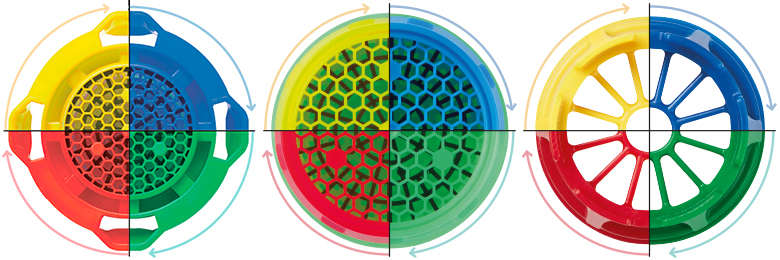Clinic Aerators
Four colours, four changes - better hygiene.
Are you looking for an aerator suited to hospitals and medical facilities? Then Neoperl has the following three recommendations for you:
- In medical facilities, aerators help to prevent water unintentionally landing on surfaces or splashing. This means they reduce the risk of pathogens being transmitted.
- Although the expert report shows that traditional vented aerators do not present a significantly higher risk of infection through inhalable pathogens, we recommend using laminar flow aerators. These almost completely prevent the intake and distribution of contaminated aerosol particles.
- Various environmental factors in a medical facility can lead to biofilm growth on an aerator. We therefore recommend replacing them regularly. Exactly how often the aerators should be replaced is up to the individual medical facility, but Neoperl's colour coding system can help to remind staff when it is time for a replacement.
In order to meet these three conditions, Neoperl has developed the following products:
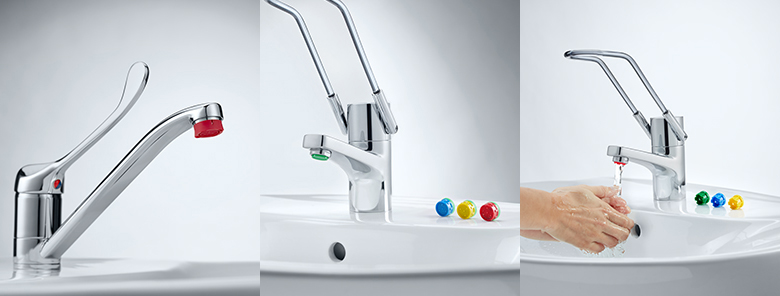
CLINIC Snap Honeycomb Aerator
Four colours, four changes – straightforward replacement.
The CLINIC Snap Honeycomb comes in two parts and consists of an aerator and a chrome-plated adaptor. The latter only needs to be fixed to the tap once and is available in the two common sizes M22 and M24. The fixed adaptor allows the CLINIC Snap Honeycomb to be installed and removed very easily, with little time or expense.
He is designed not to draw in any air. The result is a clear laminar flow. Laminar flow aerators such as the CLINIC Snap Honeycomb result in reduced splashing of water and aerosol formation. They therefore minimise the risk of infection by legionella or pseudomonas bacteria. Ideal for hospitals and care facilities.
The aerator has a flow limiter which restricts the water flow rate of the tap to approx. 7.5 – 9 l / min at a pressure of 3 bar. This type of flow restriction makes a significant contribution to preventing unnecessary contamination through splashing water.
Simply hold the aerator in position and apply light pressure to snap it onto the adaptor. Slightly turn the aerator by hand to detach it again very easily from the adaptor (no tools required).
Further information can be found in the corresponding brochure.
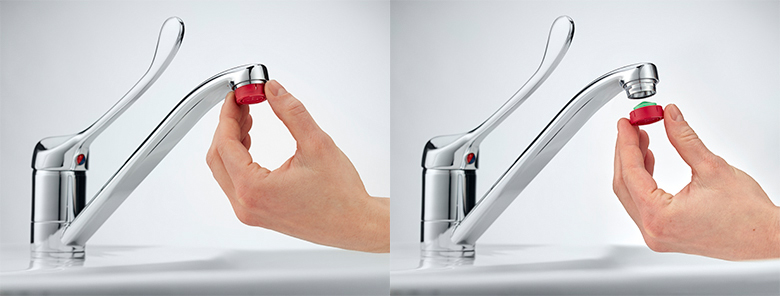

HONEYCOMB Clinic
No air intake, for a lower infection risk.
The HONEYCOMB Clinic is designed not to draw in any air. The result is a clear laminar flow. Laminar flow aerators such as the HONEYCOMB Clinic result in reduced splashing of water and aerosol formation. They therefore minimise the risk of infection by legionella or pseudomonas bacteria.
Ideal for hospitals and care facilities.
The aerator has a flow limiter which restricts the water flow rate of the tap to approx. 7.5 – 9 l / min at a pressure of 3 bar. This type of flow restriction makes a significant contribution to preventing unnecessary contamination through splashing water.
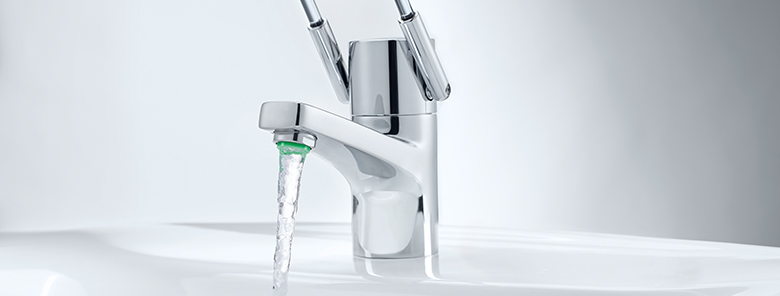

NEOSTRAHL® Clinic
No air intake, for a lower infection risk.
The NEOSTRAHL® Clinic is designed not to draw in any air. The result is a clear laminar flow. Laminar flow aerators such as the NEOSTRAHL® Clinic result in reduced splashing of water and aerosol formation. They therefore minimise the risk of infection by legionella or pseudomonas bacteria.
Ideal for hospitals and care facilities.
He is especially suitable for low pressureless installations.
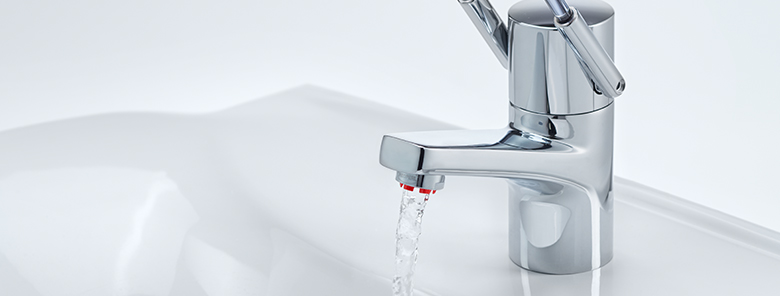

Four colours, for a lower infection risk.
To maximise hygiene we recommend replacing the aerators regularly. The Clinic aerators feature a simple colour coding system to help staff to do this:
The aerators come in four different colours, with each colour representing a replacement cycle. This means it is easy to recognise and monitor whether replacement is taking place regularly and correctly.
The replacement interval must be individually defined within a facility, as water quality affects the microbiological contamination of the aerator.
